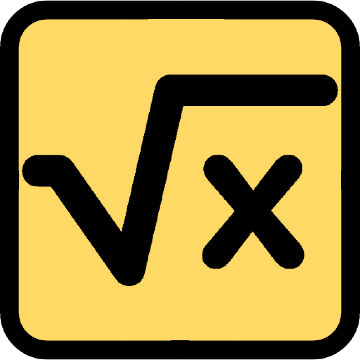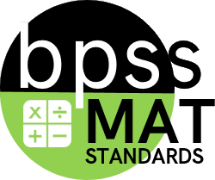MAT-12.AR.F.04

|
12th Grade (MAT) Targeted Standard
(AR) Algebraic Reasoning (Functions)
Learners will develop a foundational knowledge of functions and use them to model relationships between quantities.
|
MAT-12.AR.F.04 Identify the effect of transformations on the graph of a function by replacing f(x) with af(x), f(bx), f(x - h), and f(x) + k, for specific values of a, h, and k (both positive and negative). Find the value of a, b, h, and k given the graph of the function. Recognize even and odd functions from their graphs and equations.
 Proficiency Scale Proficiency Scale
Progressions
Functional Relationships
- MAT-08.AR.F.01 Defend whether a relation is a function from various representations using appropriate function language.
- MAT-08.AR.F.02 Compare and contrast properties of two linear functions, each represented in a different way (algebraically, graphically, numerically in tables, and/or by descriptions).
- MAT-08.AR.F.03 Compare and contrast linear and non-linear functions represented in different ways (algebraically, graphically, numerically in tables, and/or by descriptions).
- MAT-08.AR.F.04 Model a linear relationship between two quantities by creating a table, graph, and equation. Interpret the rate of change and initial value of a linear function in terms of the situation it models.
- MAT-08.AR.F.05 Describe qualitatively the functional relationship between two quantities by analyzing a graph, including where the function is constant, increasing, or decreasing; linear or nonlinear; and discrete or continuous. Create a graph that exhibits the qualitative features of a function described.
- MAT-09.AR.F.01 Determine whether a relationship is a function given a table, graph, or words, identifying x as an element of the domain and f(x) as an element in the range. Determine the domain and range of a function in context.
- MAT-09.AR.F.02 Use function notation, evaluate functions for inputs in their domains and interpret statements that use function notation in terms of context.
- MAT-09.AR.F.03 Sketch key features (to include intercepts, maximums, minimums, and lines of symmetry, where applicable) of linear, exponential, and quadratic functions modeling the relationship between two quantities using tables, graphs, written descriptions, and equations.
- MAT-09.AR.F.04 Relate the domain of a linear, quadratic, or exponential function to its graph and, where applicable, to the quantitative relationship it describes.
- MAT-09.AR.F.05 Calculate and interpret the average rate of change of a linear, quadratic, or exponential function (presented algebraically or as a table) over a specified interval. Estimate the rate of change from a graph.
- MAT-09.AR.F.06 Write a function defined by an expression in different but equivalent forms to reveal and explain the different properties of the function.
- MAT-09.AR.F.07 Compare key features of two linear, exponential, or quadratic functions, each represented in a different way (algebraically, graphically, numerically in tables, or by verbal descriptions).
- MAT-09.AR.F.08 Identify situations that can be modeled with linear, quadratic, and exponential functions.
- MAT-09.AR.F.10 Find the inverse of a linear function and describe the relationship between the domain, range, and graph of the function and its inverse. Graph the inverse of a linear function.
- MAT-09.AR.F.11 Interpret the parameters of a linear, quadratic, or exponential function in terms of context.
- MAT-10.GM.02 Represent transformations in the plane. Describe transformations as functions that take points in the plane as inputs and give other points as outputs. Compare transformations that preserve distance and angle to those that do not (i.e., rigid versus non-rigid motion).
- MAT-10.GM.26 Recognize that the radian measure of an angle is the ratio of the length of the arc to the length of the radius of a circle.
- MAT-12.AR.F.01 Write a function that describes a relationship between two quantities.
- MAT-12.AR.F.02 Calculate and interpret the average rate of change of a function (presented symbolically or as a table) over a specified interval. Estimate the rate of change from a graph.
- MAT-12.AR.F.03 Write a function defined by an expression in different but equivalent forms to reveal and explain the different properties of the function.
- MAT-12.AR.F.04 Identify the effect of transformations on the graph of a function by replacing f(x) with af(x), f(bx), f(x - h), and f(x) + k, for specific values of a, h, and k (both positive and negative). Find the value of a, b, h, and k given the graph of the function. Recognize even and odd functions from their graphs and equations.
- MAT-12.AR.F.05 Find inverse functions.
- MAT-12.AR.F.06 Apply the inverse relationship between exponents and logarithms to solve problems.
- MAT-12.AR.F.07 Compare key features of two functions, each represented in a different way (algebraically, graphically, numerically, in tables, or by verbal descriptions).
- MAT-12.AR.F.08 Use tables, graphs, verbal discussions, and equations to interpret and sketch the key features of a function modeling the relationship between two quantities.
- MAT-12.AR.F.09 Relate the domain of a function to its graph and, where applicable, to the quantitative relationship it describes.
- MAT-12.AR.F.11 Analyze and graph functions expressed symbolically (by hand in simple cases and using technology for more complicated cases), identifying key features of the graph.
- MAT-12.AR.F.12 Compare the end behavior of linear, quadratic, and exponential functions using graphs and/or tables to show that a quantity.
- MAT-12.AR.F.13 Determine whether a linear, quadratic, polynomial, exponential, logarithmic, or trigonometric model fits the situation. Determine an appropriate mathematical model in context (with or without technology).
- MAT-12.AR.F.14 Write arithmetic and geometric sequences both recursively and with an explicit formula and convert between the two forms. Use sequences to model situations.
- MAT-12.AR.F.16 Extend right triangle trigonometry and apply knowledge of the unit circle to determine values of sine, cosine, and tangent for multiples of π /3, π/4 and π/6.
- MAT-12.AR.F.17 Use the Pythagorean Identity sin²(θ) + cos²(θ) = 1 to find sin(θ), cos(θ), or tan(θ) given sin(θ), cos(θ), or tan(θ) and the quadrant of the angle.
- MAT-12.AR.F.18 Explain how the unit circle in the coordinate plane enables the extension of trigonometric functions to all real numbers, interpreted as radian measures of angles traversed counterclockwise around the unit circle.
- MAT-12.AR.F.19 Use the unit circle to express the values of sine, cosine, and tangent for π - x, π + x, and 2π - x in terms of their values for x, where x is any real number.
- MAT-12.AR.F.20 Use the unit circle to explain the symmetry (odd and even) and the periodicity of trigonometric functions.
- MAT-12.AR.F.21 Create a trigonometric function to model periodic phenomena.
- MAT-12.AR.F.22 Restrict the domain of a trigonometric function to construct its inverse.
- MAT-12.AR.F.23 Use inverse functions to solve trigonometric equations that arise in modeling contexts; evaluate the solutions and interpret them in context.
- MAT-12.AR.F.24 Know and apply the addition and subtraction formulas for sine, cosine, and tangent to solve problems.
Graphing Functions
- MAT-08.AR.F.05 Describe qualitatively the functional relationship between two quantities by analyzing a graph, including where the function is constant, increasing, or decreasing; linear or nonlinear; and discrete or continuous. Create a graph that exhibits the qualitative features of a function described.
- MAT-09.AR.F.01 Determine whether a relationship is a function given a table, graph, or words, identifying x as an element of the domain and f(x) as an element in the range. Determine the domain and range of a function in context.
- MAT-09.AR.F.03 Sketch key features (to include intercepts, maximums, minimums, and lines of symmetry, where applicable) of linear, exponential, and quadratic functions modeling the relationship between two quantities using tables, graphs, written descriptions, and equations.
- MAT-09.AR.F.09 Identify the effect of transformations on the graph of a linear, absolute value, or quadratic function by replacing f(x) with af(x), f(x - h), and f(x) + k, for specific values of a, h, and k (both positive and negative). Find the value of a, h, and k given the graph of the function.
- MAT-09.AR.F.10 Find the inverse of a linear function and describe the relationship between the domain, range, and graph of the function and its inverse. Graph the inverse of a linear function.
- MAT-09.AR.F.12 Identify, using graphs or tables, the solution(s) to linear or exponential functions f(x) = g(x) as xvalues that result in equivalent y-values.
- MAT-12.AR.14 Identify zeros of polynomials when suitable factorizations are available. Use the zeros to construct a rough graph of the function defined by the polynomial.
- MAT-12.AR.16 Identify, using graphs, technology, tables, or successive approximations, that the solution(s) to the equation f(x) = g(x) is the x-value(s) that result in the y-values of f(x) and g(x) being the same.
- MAT-12.AR.F.04 Identify the effect of transformations on the graph of a function by replacing f(x) with af(x), f(bx), f(x - h), and f(x) + k, for specific values of a, h, and k (both positive and negative). Find the values of a, b, h, and k given the graph of the function. Recognize even and odd functions from their graphs and equations.
- MAT-12.AR.F.08 Use tables, graphs, verbal descriptions, and equations to interpret and sketch the key features of a function modeling the relationship between two quantities.
- MAT-12.AR.F.09 Relate the domain of a function to its graph and, where applicable, to the quantitative relationship it describes.
- MAT-12.AR.F.10 Graph functions expressed symbolically and show key features of the graph by hand in simple cases and using technology for more complicated cases.
- MAT-12.AR.F.11 Analyze and graph functions expressed symbolically (by hand in simple cases and using technology for more complicated cases), identifying key features of the graph.
- MAT-12.AR.F.12 Compare the end behavior of linear, quadratic, and exponential functions using graphs and/or tables to show that a quantity increasing exponentially eventually exceeds a quantity increasing as a linear or quadratic function
Transformations
- MAT-08.GM.GF.01 Perform single transformations to a figure on or off the coordinate plane and determine whether the figures are congruent or similar.
- MAT-08.GM.GF.02 Describe the characteristics of transformations on the coordinate plane using transformation language.
- MAT-08.GM.GF.03 Name the type of transformation(s) needed to map a pre-image to its image.
- MAT-09.AR.F.09 Identify the effect of transformations on the graph of a linear, absolute value, or quadratic function by replacing f(x) with f(x) + k, f(x - h) and af(x), for specific values of a, h, and k (both positive and negative).
Find the values of a, h, and k given the graph of the function.
- MAT-10.GM.02 Represent transformations in the plane. Describe transformations as functions that take points as outputs. Compare transformations that preserve distance and angle to those that do not (i.e., rigid versus non-rigid motion).
- MAT-10.GM.03 Describe the rotations and reflections of a triangle, rectangle, parallelogram, trapezoid, or regular polygon that map each figure onto itself or another figure.
- MAT-10.GM.04 Develop or verify the characteristics of rotations, reflections, and translations in angles, circles, perpendicular lines, parallel lines, and line segments.
- MAT-10.GM.05 Draw the image of a figure that has undergone a series of transformations [rotation(s),
- reflection(s), or translation(s)] of a geometric figure using a variety of methods (e.g., graph paper, tracing paper, or geometry software).
- MAT-10.GM.06 Predict the effect of a specified rigid motion on a given figure using geometric descriptions of rigid motions. Determine whether two figures are congruent using the definition of congruence in terms of rigid motions.
- MAT-10.GM.14 Verify experimentally and justify the properties of dilations given by a center and a scale factor.
- MAT-10.GM.15 Use transformations to decide if two given figures are similar. Apply the meaning of all corresponding pairs of angles and the proportionality of all corresponding pairs of sides.
- MAT-10.GM.16 Prove similarity theorems about triangles.
- MAT-10.GM.17 Apply knowledge of congruence and similarity criteria for triangles to solve problems and prove relationships in various geometric figures.
- MAT-12.AR.F.4 Identify the effect of transformations on the graph of a function by replacing f(x) with af(x), f(bx), f(x-h), and f(x) + k, for specific values of a, h, and k (both positive and negative). Find the values of a, b, h, and
k given the graph of the function. Recognize even and odd functions from their graphs and equations.
- MAT-12.NO.18 Multiply a vector by a scalar.
|


